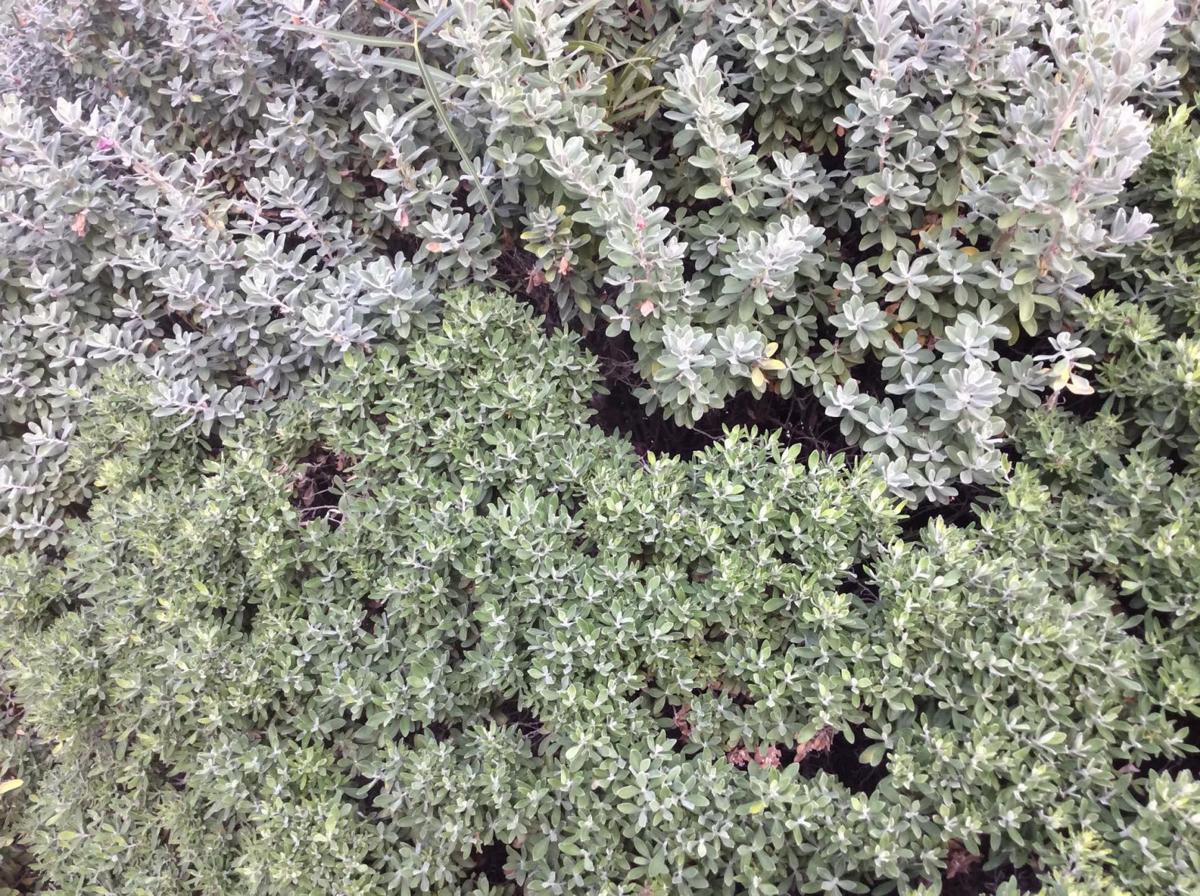Q: Can you tell me what is going on with this sage bush? I took a sample to the nursery and was told it is new growth. The bush has been this way for a couple of years and stays on the same side of the bush. Is this a problem or just new growth?
A: New growth is correct in so far as it’s newer than the shrub you planted. Unlike normal new growth, it won’t take on the appearance of old growth after a period of time. It appears that your Texas ranger has reverted back to it’s original form, at least in part.
Many of the interesting cultivars we see in landscapes originate from some mutation with desirable characteristics from the original parent plant. These interesting mutations can be propagated into new cultivars and then introduced into the horticulture trade. Unfortunately, not all of these cultivars are stable and they sometimes revert back to the original plant. The original is likely more vigorous than the designer cultivar and could take over the space by outgrowing the shrub you planted. So if you like the one you planted more than the new original version, you can prune out the offending parts. As long as we’re discussing them, these plants are commonly called sages but are actually not related to the true sages in the Salvia genus. Rather they are in the figwort family, Scrophulariaceae.
Peter L. Warren is the urban horticulture agent for the Pima County Cooperative Extension and the University of Arizona. Questions and photos may be emailed to tucsongardensage@gmail.com.





